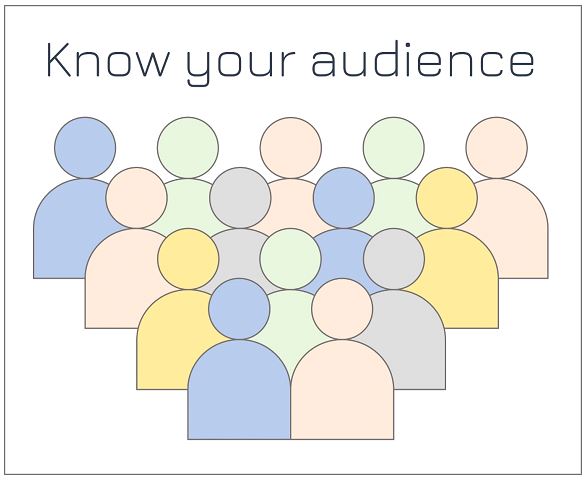Consciously or sub-consciously, in our daily lives we tend to alter the way we communicate with people depending on whom we are talking to. The vocabulary that we use, the tone of voice, how loud and fast we speak, and the timing of the conversation are all things that we control and adjust based on our perception of the person we’re talking to, and whether we want to build empathy and affiliation, assert dominance or take a more submissive stance. To be successful, our perception of the other person’s mood and needs has to be accurate, and we need to be a good judge of how they might react to different approaches.
Business communication is no different, although we can take a more data-led approach.

The first step is to identify the different groups of people that we want to target. This will often include not only the people who make the purchase decision, but those who influence that decision too.
Then for each target group, we need to understand their needs – what do they want from a supplier and why would they choose one supplier over another. In the construction industry, for example, the purchaser of building products will often be the contractor, who is primarily interested in the cost, lead time and reliability of the products in question (assuming that the products meet the essential performance criteria). But there may be several groups who influence that purchase decision – the architect, end-user, developer, sub-contractor, consultant and so on. Each of these groups will have their own list of what’s important to them – a list that might include the aesthetics, performance, reliability, warranties, cost, brand, availability, ease of installation and so on, but the order of priority will be different for each group.
Timing is also key, with different groups offering their input at different times. Using this same example, the architect will often make their specification several months before the final purchase is made, and it’s not uncommon for the contractor or sub-contractor to switch that specification to suit their needs when the time comes to make the purchase. Needless to say, communication from the supplier is more likely to succeed if it is made at the right time for each group.
The final part of the process is to tailor the communication to the needs of the audience. The language, tone and content of a message to an architect should be different to the message that is sent to the contractor, for example. The chosen media for communication to each group is likely to be different too, and with digital channels in particular, we have the ability to be quite specific in our targeting.
A good marketing communications strategy will pull all of this together into one cohesive plan, identifying each group and what’s important to them, deciding on the key messages, planning a schedule and selecting the best media for each.
The team at 49 Red have vast experience in building effective marketing communication strategies for small- and medium-sized businesses across the UK. Contact us today to find out how we can help with all your marketing communication needs, from the segmentation exercise, to the planning, content and execution.



